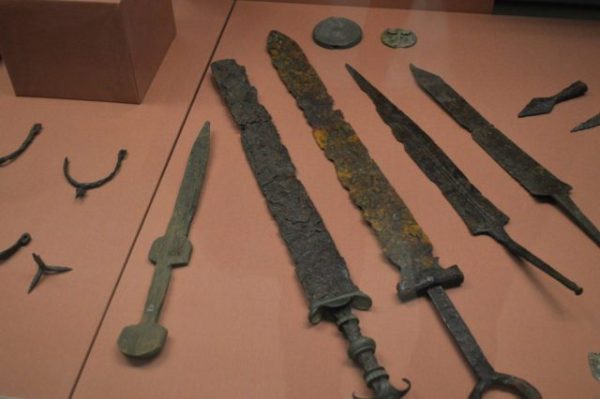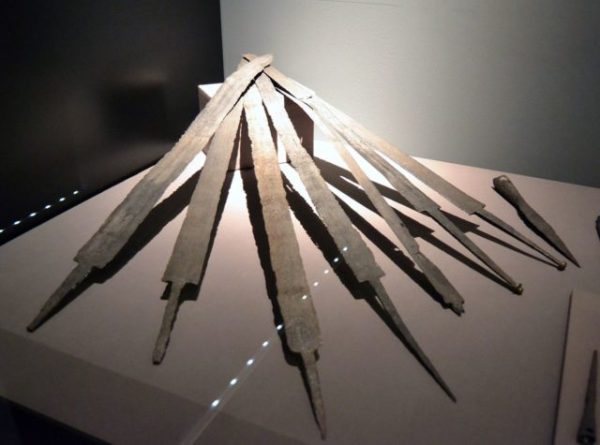The Spatha, an iconic Roman sword, found its introduction into the imperial army during the early imperial period. Initially, Celtic cavalry auxiliaries, retaining their long swords with blade lengths ranging from 60 to 85 cm, brought the Spatha to Roman service.

Gradually supplanting the earlier Gladius sword from the late 2nd to the 3rd century, the Spatha became a favored weapon. In the early 3rd century, both legionaries and cavalrymen began wearing their swords on the left side, potentially due to the abandonment of the scutum and the Spatha replacing the Gladius.
During the imperial period, the Romans adopted the original Greek term “spáthē” (σπάθη) as Spatha, signifying any object considered long and flat.

The term “Spatha” first appears in writings like those of Pliny and Seneca with various meanings, ranging from a spatula to a metal-working implement or a palm leaf. Tacitus later refers to a real sword in the context of an incident involving the British king Caractacus during the early Empire.
Most examples of Spathae discovered come from Germany and Eastern Europe. The swords, characterized by their length and flatness, were likely owned by Germanic individuals.

The ambiguity in Tacitus’s account regarding the identity of the auxiliaries makes it challenging to pinpoint their origin accurately.
After a mysterious hiatus of about two centuries without mention, Spathae re-emerged as the standard weapon of heavy infantry. The Romans might have adopted this weapon from auxiliaries, potentially Germanic mercenaries, although the name “Spatha” does not support a Germanic origin.
The use of Spatha persisted in the Byzantine Empire, where it held significance in the court. The title “spatharios” (σπαθάριος), meaning “bearer of the spatha,” denoted a mid-level court title.

Other variations, such as protospatharios, spatharokandidatos, and spatharokoubikolarios, were reserved for specific roles, with the latter title specifically designated for eunuchs. The legacy of the Spatha extended beyond the Roman Empire, leaving an indelible mark on the history of weaponry.





